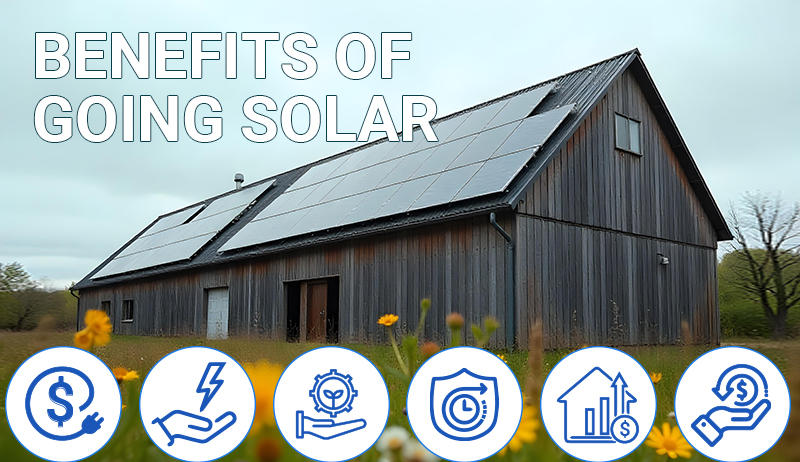Urban Green Infrastructure
Green spaces and biodiversity are vital components of sustainable and livable cities.
They provide numerous benefits, including improved physical and mental health, enhanced air quality, climate resilience, and opportunities for recreation and connection with nature.
By prioritizing the preservation and creation of green spaces and fostering biodiversity within urban environments, cities can create healthier, more resilient, and enjoyable places for people and wildlife.
Preserving Natural Areas
Preserving existing natural areas, such as parks, forests, wetlands, and natural habitats, is crucial for maintaining biodiversity within urban landscapes. These areas serve as havens for native plant and animal species and support ecological processes essential for the overall health of urban ecosystems. By conserving and protecting natural areas from development, cities can safeguard biodiversity, maintain ecosystem services, and provide opportunities for residents to connect with nature.
Urban green infrastructure refers to the planned and interconnected network of green spaces, including parks, green roofs, urban forests, and green corridors. Integrating green infrastructure into urban planning and development helps mitigate the negative impacts of urbanization, such as heat island effects, air pollution, and stormwater runoff.
Green roofs and walls, for example, can reduce energy consumption, mitigate stormwater runoff, and improve air quality. By incorporating green spaces and features into the built environment, cities can enhance the quality of life for residents, support biodiversity, and promote sustainable urban development.
Community Gardens and Urban Agriculture
Community gardens and urban agriculture initiatives provide opportunities for residents to actively participate in sustainable land use practices and contribute to local food production.
These spaces not only enhance access to fresh and healthy food but also foster community engagement, social cohesion, and education. Community gardens can promote biodiversity by providing habitats for pollinators and supporting diverse plant species. Urban agriculture initiatives, such as rooftop gardens and vertical farming, contribute to local food security while reducing transportation-related emissions and promoting resource efficiency.
Tree Planting and Urban Forestry
Trees play a crucial role in urban environments by providing shade, reducing heat island effects, improving air quality, and supporting biodiversity. Cities can prioritize tree planting initiatives and urban forestry programs to increase tree canopy coverage and enhance the ecological and aesthetic value of urban landscapes. Strategic tree planting in public spaces, along streets, and in parks helps to create cooling effects, reduce energy consumption, and improve overall urban livability.
Creating Wildlife-Friendly Habitats
Designing urban environments with wildlife-friendly features and habitats can encourage the presence of diverse plant and animal species. Cities can incorporate native plantings, green roofs, and water features that support pollinators, birds, and other wildlife. Providing nesting boxes, bat houses, and wildlife corridors can help maintain connectivity between green spaces and support urban biodiversity. Creating wildlife-friendly habitats fosters a sense of ecological balance within cities and enables residents to coexist with nature.
Engaging the Community
Engaging the community in green space planning, biodiversity conservation, and stewardship programs is vital for the long-term success of urban sustainability initiatives. Cities can involve residents, schools, and community organizations in tree planting events, citizen science projects, and educational programs focused on biodiversity and ecological restoration. By fostering a sense of ownership and responsibility, cities can create a culture of environmental stewardship and ensure the long-term protection and enhancement of green spaces and biodiversity.
Green spaces and biodiversity are integral components of sustainable and resilient urban environments. By preserving natural areas, incorporating green infrastructure, promoting urban agriculture, planting trees, creating wildlife-friendly habitats, and engaging the community, cities can enhance biodiversity, improve air quality, mitigate climate change impacts, and enhance the overall well-being of residents. Prioritizing green space and biodiversity in urban planning and development contributes to creating vibrant, healthy, and sustainable cities that support both people and the diverse ecosystems they inhabit. It is essential for city planners, policymakers, and community members to recognize the value of green spaces and biodiversity and work together to ensure their protection and enhancement.
Sustainable cities are those that prioritize the integration of nature into urban landscapes, creating a harmonious balance between human development and ecological preservation. By incorporating green spaces and promoting biodiversity, cities can create healthier and more resilient environments. These spaces offer opportunities for relaxation, recreation, and physical activity, contributing to improved mental and physical well-being of residents.
In addition, green spaces act as natural filters, helping to improve air quality by absorbing pollutants and reducing noise levels, creating a more pleasant and peaceful urban environment. They also help mitigate the effects of climate change by providing shade, reducing the urban heat island effect, and improving water management through stormwater retention.
Biodiversity is essential for maintaining ecosystem health and resilience. Urban areas can support biodiversity by incorporating native plant species in landscaping, creating habitat corridors, and implementing sustainable land management practices. By providing suitable habitats for wildlife, cities can support pollinators, birds, and other species, contributing to the overall biodiversity of the region.
The presence of green spaces and biodiversity in cities also offers educational opportunities. They serve as living laboratories where people can learn about ecosystems, species interactions, and the importance of conservation. Education and awareness play a crucial role in fostering a sense of environmental responsibility and encouraging sustainable practices among residents.
To maximize the benefits of green spaces and biodiversity, it is crucial to prioritize their integration into urban planning processes. This requires collaboration between urban planners, landscape architects, environmental experts, and community members. It is important to allocate adequate land for green spaces, ensure their proper maintenance, and create policies that protect and enhance biodiversity.
Conclusion Green Space and Biodiversity: Enhancing Urban Environments for People and Nature
Cities can implement programs that engage the community in the stewardship of green spaces and promote citizen science initiatives.
By involving residents in monitoring and conservation efforts, cities can strengthen the sense of ownership and responsibility, ensuring the long-term sustainability of green spaces and biodiversity initiatives.
Green spaces and biodiversity are vital components of sustainable and livable cities. By preserving natural areas, incorporating green infrastructure, promoting urban agriculture, creating wildlife-friendly habitats, and engaging the community, cities can enhance biodiversity, improve air quality, mitigate climate change impacts, and promote the overall well-being of residents. The integration of nature into urban landscapes not only provides ecological benefits but also creates more vibrant, healthy, and sustainable cities for generations to come.
https://www.exaputra.com/2023/06/green-space-and-biodiversity-enhancing.html
Renewable Energy
Doing What’s “Right” Is More Controversial than it Seems
 Some of us are looking for a single, simple statement to encapsulate what is going so wrong in America today, and perhaps it relates to what Aristotle says at left here.
Some of us are looking for a single, simple statement to encapsulate what is going so wrong in America today, and perhaps it relates to what Aristotle says at left here.
Even the MAGA folks think that what they’re doing is “right.” By this I mean white supremacy, mass deportation of immigrants (with or without due process), the rejection of science, and so forth.
Renewable Energy
Trump’s Agenda Is Even Far-Reaching Than People May Think
 As Trump’s former lawyer Ty Cobb says at left, in addition to turning the United Stated into an autocratic regime, at the same time, Trump needs to alter history such that future generations don’t think he did anything wrong.
As Trump’s former lawyer Ty Cobb says at left, in addition to turning the United Stated into an autocratic regime, at the same time, Trump needs to alter history such that future generations don’t think he did anything wrong.
Yes, he has his hands full, but he’s assisted by hundreds of traitors in congress, and hundreds of millions of hateful morons in the U.S. electorate.
Renewable Energy
Victoria’s VEU Scheme Introduces New Solar Incentives for C&I Properties
-
Climate Change2 years ago
Spanish-language misinformation on renewable energy spreads online, report shows
-
Climate Change Videos2 years ago
The toxic gas flares fuelling Nigeria’s climate change – BBC News
-
Climate Change2 months ago
Guest post: Why China is still building new coal – and when it might stop
-

 Greenhouse Gases1 year ago
Greenhouse Gases1 year ago嘉宾来稿:满足中国增长的用电需求 光伏加储能“比新建煤电更实惠”
-

 Climate Change1 year ago
Climate Change1 year ago嘉宾来稿:满足中国增长的用电需求 光伏加储能“比新建煤电更实惠”
-
Greenhouse Gases2 months ago
Guest post: Why China is still building new coal – and when it might stop
-

 Carbon Footprint1 year ago
Carbon Footprint1 year agoUS SEC’s Climate Disclosure Rules Spur Renewed Interest in Carbon Credits
-
Renewable Energy3 months ago
US Grid Strain, Possible Allete Sale












